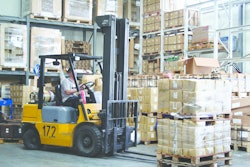
Few threats can disrupt food and beverage operations more significantly than product recalls. The globalization of production and distribution has undeniably expanded product selection, but it also has increased the potential for disruptive recall incidents. Moreover, as supply chains expand across the globe, companies are finding it more difficult to maintain control over them, increasing the possibility of adulterated products reaching the marketplace.
With risks on the rise, the Food & Drug Administration (FDA) has increased scrutiny over quality control, leaving supply chain managers with a new set of standards to understand. In fact, the number of FDA warning letters, the majority of which were issued to food and beverage companies, skyrocketed from 1,720 to more than 14,000 between 2011 and 2016, according to the FDA’s own annual enforcement data.
In spite of this increased quality control oversight, many organizations continue to underestimate the need for product recall protection. Companies need to plan ahead and get insured—or risk facing the consequences.
For supply chains, collateral damage from a recall event comes in two forms: financial loss from business interruption and reputational damage.
Financial Loss from Business Interruption
Many companies don’t have the resources to address the impact of a widespread recall and are unable to survive the shock of a financial loss. Following an incident, interruptions to business flow and the loss of profits have the potential to close businesses within four to six months—especially smaller companies. While larger supply chains are better equipped to handle an interruption, hazards, including contamination, adulteration and mislabeling, are ever-present. Some of the most common causes of business interruption include:
- Product Unavailability—A contamination may affect a large volume of product, leaving a company unable to meet demand.
- Contaminated Equipment—The time it takes to decontaminate tainted equipment can lead to a partial or complete shutdown of operations.
- Regulatory Action—Government agencies can put a stop to business operations until operating conditions are safe again.
Without proper insurance coverage, companies will need to absorb the out-of-pocket costs incurred by physically removing and replacing the product from the stream of commerce. During this period of uncertainty, customers may look to new vendors, resulting in a sustained downturn in revenue.
Reputational Damage
Brand damage can last for years, leading to reduced product confidence, and more severely, marketplace trust.
When dealing with reputational risk, companies should be as transparent as possible and report incidents to the proper authorities in accordance with all applicable statutory and regulatory requirements. When evaluating potential brand damage around a recall, companies should consider the scope and scale of the recall, how much product was affected, and if the product was recalled previously.
Product Recall Prevention and Preparedness Plan
Of course, companies should try to avoid such dire straits in the first place. Combining adequate insurance protection with pre- and post-incident product recall strategies can help companies prevent an occurrence.
A product recall prevention and preparedness plan is essential for supply chains, and should include:
- Procedures for identifying and dealing with safety issues—By identifying a potential problem early and addressing it quickly, companies can often avoid spiraling into a crisis.
- Communication protocols, internal and external—Effective communication with the news media, regulatory officials, investors and other stakeholders is critical. A company spokesperson should be designated and receive training in dealing with the media.
- Frequent and transparent updates for clients and consumers—Depending on the scale and scope of the incident, immediate solutions to address recalls and clear articulation of protections for clients and consumers are necessary components for any preparedness plan.
- Clearly-outlined quality control parameters—These should include mock recall drills as well as audits of systems. Plans should highlight regulatory standards, especially when they address procedures in multiple countries where rules vary.
One of the benefits of purchasing recall insurance is access to crisis consultants. These consultants can provide a step-by-step strategy to help mitigate reputational damage and negotiate on the supplier’s behalf, reducing the possibility of a wide-scale backlash. They are trained to provide guidance before, during and after a recall, as well as provide on-site audit forms, conduct mock recall exercises and finalize risk mitigation plans.
Ultimately, even with the best planning, recall incidents can still occur. However, with the right insurance coverage, companies can help ensure they will be able to navigate through a product recall event and potentially minimize its impact.



















